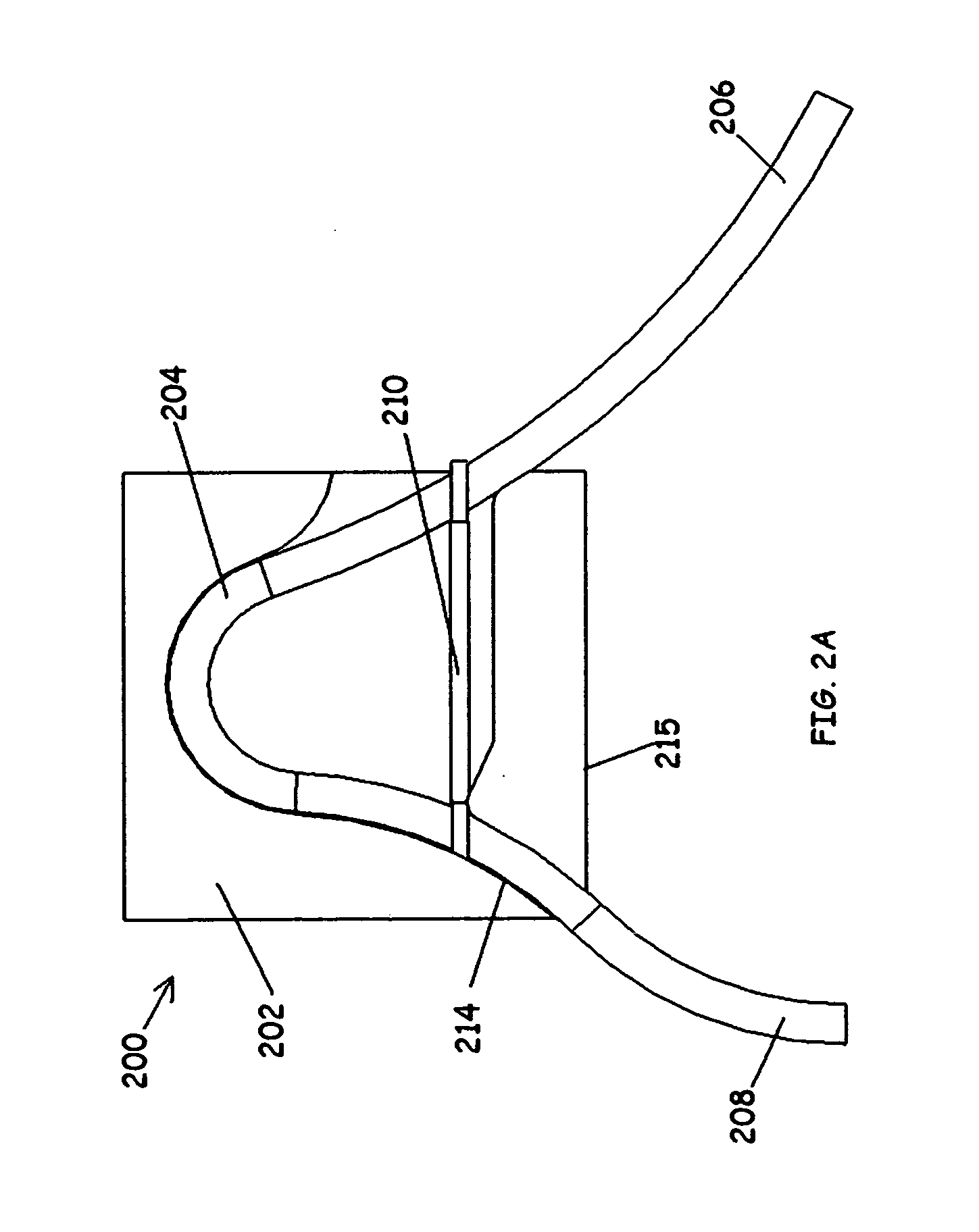Medical tubing and catheter control
a technology which is applied in the field of medical tubing and catheter control, can solve the problems of actual dislocation of the catheter, damage to the organ or vein, and patient risk of damaging the bladder, so as to reduce the discomfort and risk of infection, and increase the irritation on the penis tip
- Summary
- Abstract
- Description
- Claims
- Application Information
AI Technical Summary
Benefits of technology
Problems solved by technology
Method used
Image
Examples
first embodiment
[0140]The Catheter Controller 200, is attached to the patients leg by means of an adhesive surface 216 on the backside of the base 202 (FIG. 2b). It is orientated such that the end of the drainage tube 208 points in the general direction of the drainage bag, where it will then be connected. As can be seen by FIG. 2a, the end 208 is attached to the base 202 and positioned approximately 45° relative to the bottom edge 215 of the base 202. The 45° angle of the drainage tube 204 optimally places the end 208 such that the maximum amount of bend the drainage tube 204 will have to undergo, is about 45° regardless of the patient's leg position. The other end 206, is connected to the external end of the Foley Catheter 100 and is held in constant tension by the tension spring 210, when placed in between the calibration markings 302 shown in FIG. 3a. (see method of operation for securing controller below) Shown in FIGS. 3a and 3b, the line of tension 304 of the tension spring 210, is always pa...
PUM
 Login to View More
Login to View More Abstract
Description
Claims
Application Information
 Login to View More
Login to View More - R&D
- Intellectual Property
- Life Sciences
- Materials
- Tech Scout
- Unparalleled Data Quality
- Higher Quality Content
- 60% Fewer Hallucinations
Browse by: Latest US Patents, China's latest patents, Technical Efficacy Thesaurus, Application Domain, Technology Topic, Popular Technical Reports.
© 2025 PatSnap. All rights reserved.Legal|Privacy policy|Modern Slavery Act Transparency Statement|Sitemap|About US| Contact US: help@patsnap.com



